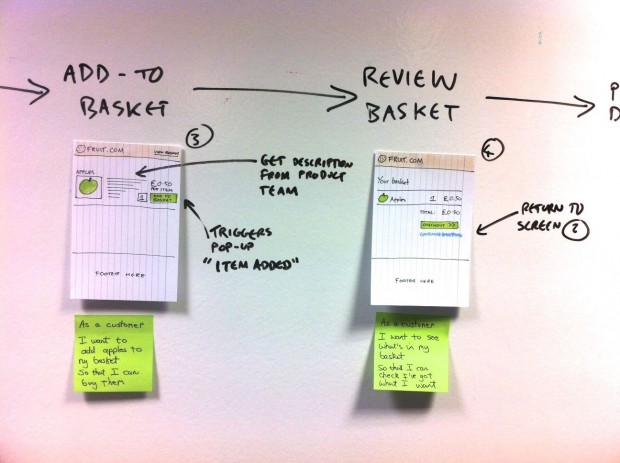This is the third instalment of a series of posts focussing on setting an analysis rhythm for large or complex agile programmes. Part one explains big thinking and part two high level design. This post explains the third activity detailed design.
Detailed design
Three components make up the detailed design activity
-
Tests
-
Stories
-
Iterated design
Tests
You start by writing a test. The business analyst and tester or developer write an end-to-end test that covers the entire chunk of work you’re delivering. Extra tests for alternative paths can be useful, but keep these to a minimum.
Writing a test helps to establish what the stories are and to consider negative flows. A test should be written in the test automation tool you are using. I tend to use ‘given, when, then’ terminology, common to behavioural driven design.
Stories
Once a test is understood the stories should become obvious. As stories are created review them with testers and developers and get the product owner to sign them off.
Iterated design
Iteration isn’t just for delivered software, it applies to design and analysis too. At this stage you should know what the screens will look like and have coded the first iteration.
Designers and user researchers should work together to put what you have in front of users. User feedback can either be gathered from lab-based sessions and worked on by designers afterwards or pop up research when designers iterate in-situ with the research underway.
Design is not 100% fixed prior to build. For example, it's still OK to change words or move buttons. Some things about the design won’t be known until you start the build. Following the proposed approach to setting an analysis rhythm will minimise the unknowns.
During the detailed design activity attach the stories you have to a wall in order to see the whole picture. This will also provide a focus for discussion.
For example when designing an online shop, the activity might look like this:
Please get in touch if you have any questions about detailed design. Tomorrow my final post will focus on the fourth and fifth activities involved in setting an analysis rhythm.
